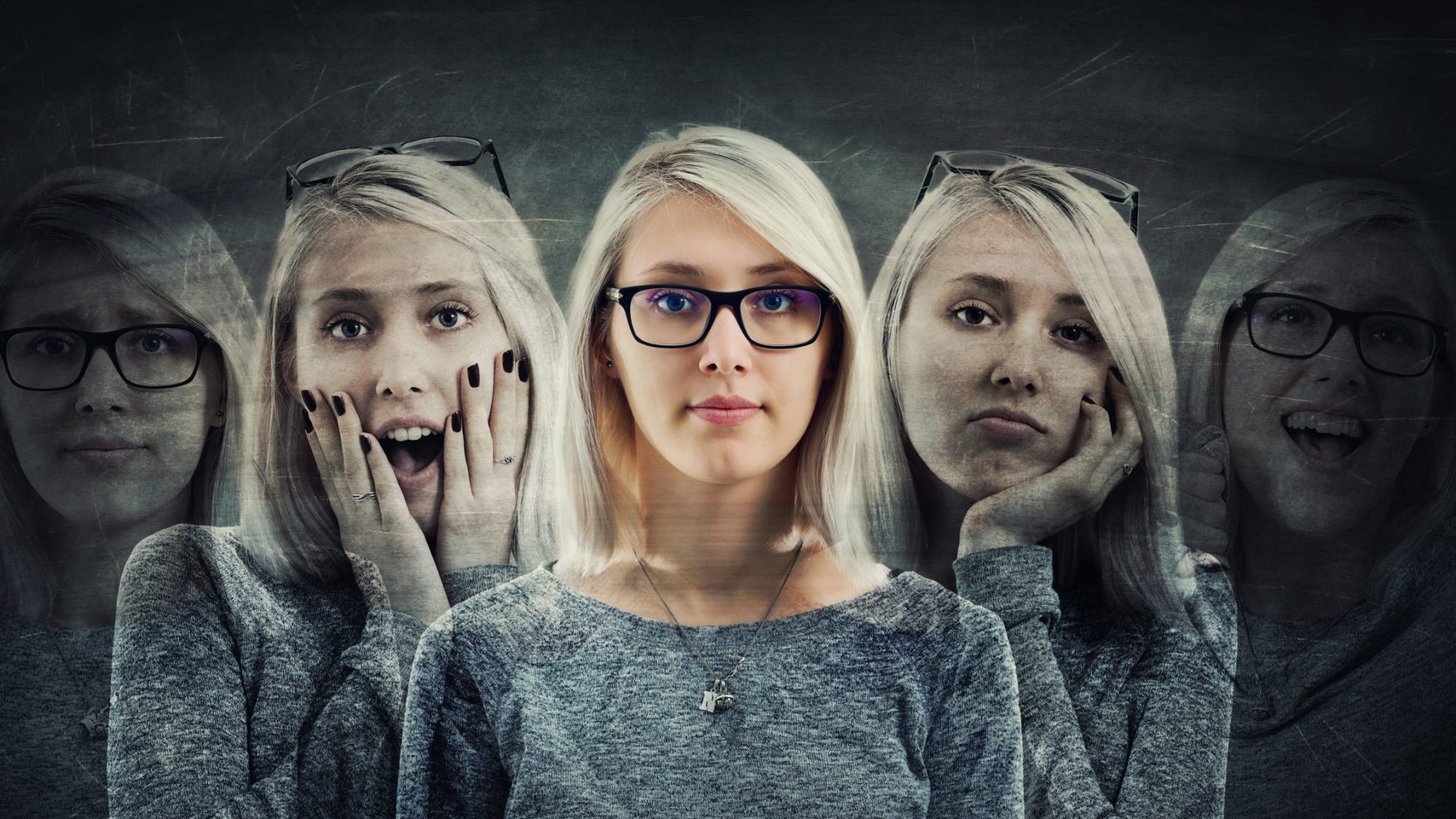
Bipolar Disorder
Treatment for Bipolar Conditions
Table of Contents
Most people have relatively stable moods from day to day. This stability is important because it helps you function in various aspects of your life. However, a significant number of people do not have stable daily moods. Instead, they experience periods of unusual mood elevation, as well as periods of depression. These periodic fluctuations are hallmarks of a mental health condition called bipolar disorder.
Bipolar disorder is a life-disrupting illness. In most cases, it grows progressively worse without treatment. For this reason, it is essential to find effective help for your condition. When you receive that help, it is often possible to manage bipolar illness and lead a productive daily life.
What Is Bipolar Disorder
Everyone experiences mood fluctuations. Sometimes, you feel better than usual. At other times, you feel worse. Still, for the most part, the average person’s moods stay within in a predictable range. Just as importantly, those moods are stable enough to not damage your ability to function.
In bipolar disorder, typical mood swings are amplified. This means that the highs are higher. It also means that the lows are lower. Those high and low periods last for significant amounts of time. They are also powerful enough to interfere with your overall mental stability. As a result, they can lead to serious dysfunction.
Close to 3 percent of all Americans have bipolar illness. The numbers of affected men and women are roughly equal. While mild and moderate cases of the illness exist, most people experience severe problems.
You are most likely to develop bipolar disorder as a teen or young adult. Preteens and younger children are also sometimes affected. In addition, some women develop symptoms while pregnant or after they give birth.
Types of Bipolar Disorder
Bipolar disorder is not just a single mental health condition. In fact, there are three distinct types of the condition. In addition, there is a fourth, less-well defined type of bipolar illness.
Bipolar I Disorder
Bipolar I disorder is a condition that largely defines the public perception of bipolar illness. People with bipolar I experience episodes of the extremely heightened state known as mania. They also tend to experience episodes of clinical depression. This helps explain why the illness was once known as manic depression. Some people with bipolar I experience depression and mania symptoms at the same time.
Mania is the classic feature of bipolar I disorder. Episodes of this state are severe and/or last for at least a week at a time. While the vast majority of people with bipolar I experience bouts of depression, not everyone does. When it occurs, depression usually lasts for at least 14 days at a time.
Bipolar II Disorder
Like people with bipolar I, people with bipolar II disorder go through serious bouts of depression and mania. However, the manic episodes are not as severe. Doctors refer to this less severe state as hypomania.
Cyclothymic Disorder, or Cyclothymia
People with cyclothymic disorder experience relatively mild episodes of hypomania. They also experience relatively mild bouts of depression. However, in adults, both the depression and hypomania linger for two years or longer. Stable moods appear only briefly between the depressed and hypomanic states.
Unspecified and “Other Specified” Bipolar Disorder
This is a catchall category for people who cannot be diagnosed with bipolar I, bipolar II or cyclothymic disorder. Not everyone who falls into this category has the same symptoms. However, as a rule, episodes of substantial mood elevation occur.
Signs and Symptoms of Bipolar Disorder

The mania and depression associated with bipolar disorders produce characteristic symptoms. These symptoms are basically the same for all bipolar conditions. However, at least some of them vary in intensity between illnesses. Your particular condition may or may not include certain symptoms.
Symptoms During Periods of Mania
- Feelings of extreme happiness or elation
- Unusually high energy levels
- The ability to function on less sleep
- Rapid speech that shifts between topics
- Racing thoughts
- Irritability or jumpiness
- Poor decision-making and risky behavior
- Amplified feelings of power or self-importance
- A declining appetite
- Feeling like you can take on multiple tasks simultaneously
Symptoms During Periods of Depression
- Feelings of sadness, worry, helplessness, worthlessness or hopelessness
- A more general “down” state of mind
- Insomnia, poor sleep or excessive sleep
- Loss of energy
- An inability to think clearly
- A rising appetite
- Forgetfulness
- Unusually slow speech
- Lack of interest in leisure or recreational activities
- A decline in sexual interest
- Loss of your ability to feel pleasure
- Suicidal thoughts or thoughts of dying
Manic and depressive symptoms can appear at the same time. When this happens, the result is called a mixed-feature episode. During this kind of episode, you may feel both energetic and emotionally down.
Many people do not recognize the seriousness of their manic or hypomanic symptoms when they first appear. That is true because these symptoms can make you feel better than usual in the short run. It is more common to notice depression first, and only later come to recognize the presence of mania or hypomania.
Bipolar Disorder Causes and Risk Factors
The exact causes and risk factors for bipolar disorder can vary from person to person. Evidence shows that there is a strong genetic element involved. Having a family history of bipolar disorder or clinical depression is a major risk factor. In fact, as many as 90 percent of all affected people have such a history.
There is also evidence of significant brain differences in people with bipolar disorder. Such differences may affect the structure of the brain itself. They may also affect the levels of essential brain chemicals called neurotransmitters.
If you are susceptible to bipolar illness, certain things in your life may set a first episode off. Examples of these things include:
- High stress levels
- A pattern of poor or disrupted sleep
- Use of alcohol or drugs
Bipolar I disorder is linked to a number of other mental health problems. If you have this illness, there is a good chance you also suffer from a problem such as:
- Medically serious anxiety
- ADHD, or attention deficit hyperactivity disorder
- Diagnosable substance abuse or addiction
Unfortunately, people with bipolar I also have heightened risks for attempting and committing suicide.
Bipolar Disorder Diagnosis

It is common to go through a physical examination if your doctor suspects you have bipolar disorder. This exam is not used to detect the illness. Instead, it helps eliminate physical problems as the source of your symptoms. The condition most likely to mimic bipolar disorders is an overactive thyroid gland.
If other causes are ruled out, your doctor will begin to look for the core symptoms of bipolar conditions. All cases of these disorders include mania or hypomania. To be diagnosed, either of these elevated moods must affect you at least once. If mania or hypomania is present, your doctor will then take steps to identify your specific illness. Depression is not definitive because it occurs in conditions other than bipolar disorder.
Addiction and Bipolar Disorder
Many people with bipolar disorder also suffer from a substance use disorder, or SUD. Whenever a mental illness and an SUD occur together, the result is called dual diagnosis. It is crucial to recognize dual diagnosis and treat it. Otherwise, your bipolar symptoms may worsen. Your substance problems may worsen as well.
Why does this happen? Research shows that the symptoms of bipolar illness may make you more sensitive to substance problems. In turn, the symptoms of substance problems may make you more sensitive to bipolar disorders.
Bipolar Disorder Treatment and Therapy Options
Once you are diagnosed with bipolar disorder, you will probably remain affected for the rest of your life. This means that you must take a long-term approach and manage your mental health. Most people receive help from two combined treatments: medication and psychotherapy.
Bipolar Disorder Medication
The most common medications used to treat bipolar conditions are mood stabilizers. Medications in this category help you by decreasing the intensity of your mood swings. They may also help prevent a depressive or manic episode from occurring. Examples of mood stabilizers include:
- Lithium
- Lamotrigine
- Carbamazepine
- Divalproex
Your treatment plan may also include an atypical antipsychotic such as:
- Clozapine
- Quetiapine
- Olanzapine
- Risperidone
These medications help control your symptoms of mania or hypomania.
Another common option is an antidepressant medication. You may receive such a medication to help control your depressive symptoms. When used together with a mood stabilizer, an antidepressant may also help prevent bouts of mania. It can take time to find the right medications for your particular situation.
Psychotherapy for Bipolar Disorder
Cognitive behavioral therapy, or CBT, is often used in bipolar illness treatment plans. CBT helps you identify emotions, thought patterns and behaviors that make your symptoms worse. It also helps you change unhelpful patterns for the better. You may also receive something called psychoeducation. That’s the name for a process that helps you and your loved ones understand and accept bipolar illness.
Today, there are modern therapies designed from the ground up for people with bipolar disorders. Examples of these emerging treatments include:
- Family-focused therapy
- IPSRT, or interpersonal and social rhythm therapy
Additional Forms of Help
Self-awareness and self-management are crucial for people with bipolar illnesses. You can help yourself by knowing in detail how your condition affects you. It is also important to know how to spot the beginning of a manic or depressive episode.
Several types of complementary care may help you manage your illness. That includes such things as:
- Getting plenty of aerobic exercise
- Learning how to meditate
- Taking steps to reduce your stress levels
- Practicing yoga or tai chi
These techniques are complementary because they do not take the place of your doctor-prescribed treatment.
Learn More About Bipolar Disorders
Quick treatment of bipolar illness is the best way to limit the effects of these conditions. Even if suffer from severe symptoms, it is possible to manage and protect your long-term health. To maximize its benefits, the help you receive should be customized. Customized treatment plans are designed with you in mind. They are adaptable, and change over time as needed.
To learn more about bipolar disorders and their treatment, contact Emerald Isle today. We feature expert, customized care for people with these illnesses. We also provide targeted care to help you recover from any additional substance problems. Emerald Isle is committed to supporting your short- and long-term health and well-being.